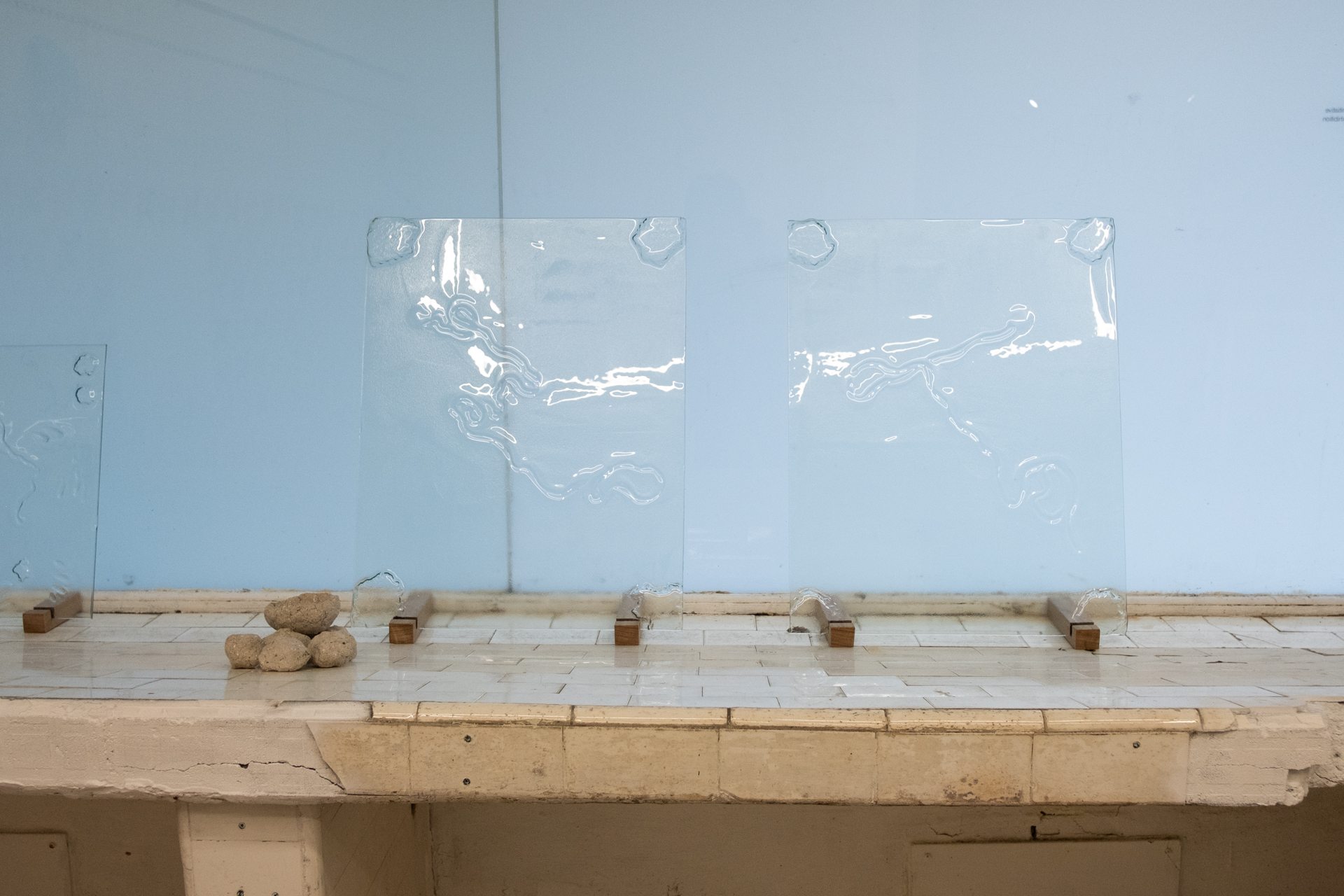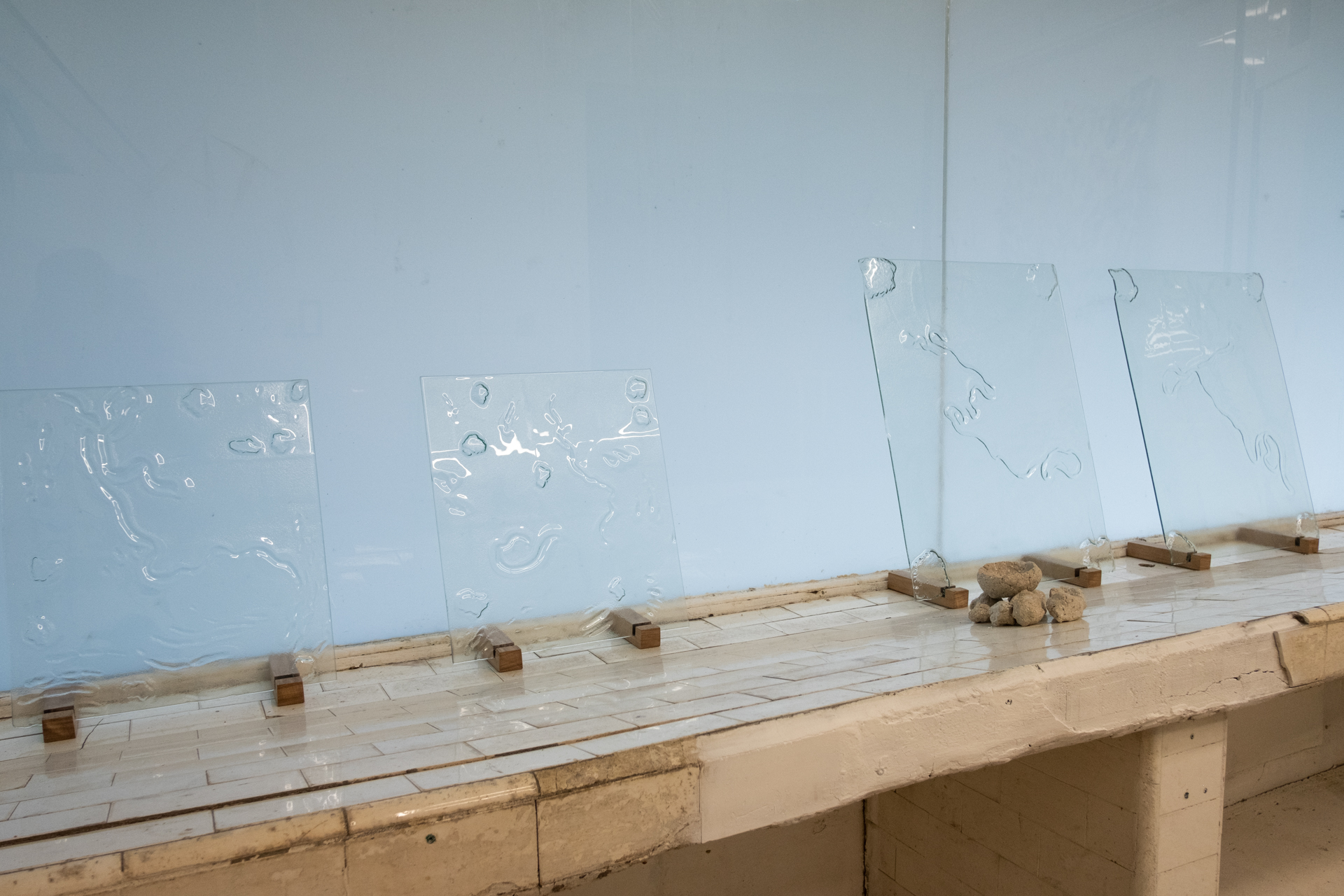![]()
![]()
![]()
![]()
![]()
![]()
![]()
![]()
Emma Pinsent, Through the hole of a shell (Installation view), 2023, Slumped recyled glass, timber stands, paper pulp and oyster shell bowls, found clam shells. Shown as part of group exhibition, errant form, Tiles, Lewisham. Photography Olga Svyatova
errant form
2 - 19 February 2023
Group exhibition
Curated by Claire De Carteret and Niko Plaskasovitis
Tiles, Lewisham NSW
Othy Willis, Owen Redmond, Elia Bosshard, Lucy Whitelaw, Emma Pinsent, Rachel Schenberg, Ju Bavyka, pollypocket, Joshua Benjamin, Claire Angelica, Niko Plaskasovitis
Straying away from how things have been done before, errant form is a collaborative effort of artists sharing and working things out together. It all started with an email chain, one artist invited the next, connecting an undefined group together, a becoming of something.
Publication contribution:
Walking along the beach, I often see
squiggles in the wet sandy flats of the shoreline. When I first noticed them, I
thought they were the outline of a long worm. I had heard about these worms
some six feet long sitting just beneath the sand’s surface. Fishermen
apparently use them for bait. I voiced my suspicions to my dad one day as we
walked, and he alerted me to the fact that it wasn’t a worm, but the trail of a
snail. I don’t know how we come to know these things. Perhaps years spent by
the ocean attunes you to its movements, behaviours, and critters — a kind of
learning through situated time spent. I went to the beach several times after
that with the aim to encounter the snail again. Crouching over and scanning the
shoreline intently, their trace was nowhere to be seen. I questioned whether I
would see them again, that perhaps they were a rare phenomenon I had
serendipitously come upon, but that I would not likely see again. I googled
“snail trail in the sand”, looking for anything that would pique the memory.
Combing through a flood of irrelevant images, I finally encountered that
familiar mark again. Most images showing the snail trail were linked to stock
image sites that you could buy for royalty-free use. I thought it peculiar that
a snail’s trail would be a useful image for distribution. How can a specific
mark meet such a generic purpose? In these images the latent presence of water
reflecting sunlight off the sand makes the snail trail look brilliant and
glossy, so perhaps for this reason it’s just a nice beachy image. Even so, by
following the trail, I came to know of a predatory sand-dwelling snail that
likes to move at low tide.
Moon snail.
When the tide goes out, the moon snail moves.
Unchallenged by the disruption of waves, they carve through the sand using
their giant foot (large in comparison to their shell) and seek out their
favourite food: clams. Enveloping their prey with their overwhelming body, they
drill a hole into the shell of a clam using their sharp tongue and suck them
out. After learning this I recalled often seeing one-half of a clamshell with a
clean hole in one of its three corners. The presence of a snail, through the
absence of another.
Soon, I’m timing my walks to coincide with
the outgoing tide. Low over high. Isn’t it interesting that our attention is
drawn to some things to the exclusion of others? What made me notice the snail
trail that day?
I like how getting to know the moon snail has
been through following loose relations: one thing looking like another, a random
conversation – following a trail that turns inwards and outwards, backwards and
forwards on itself. The ambiguity of traces (trail and hole in shell) allows
these relations to form, like six-foot-long worms, the feeling of drawing in
the sand with pointed fingers or eating oysters on Christmas Day. I follow
these trails, even as they tend to meander.







